Join More Than 50,000+ Subscribers and get latest camera news and rumors
NEW CAMERA VIDEOS ON YOUTUBE
Download Our Android App
|
By admin, on January 30th, 2024
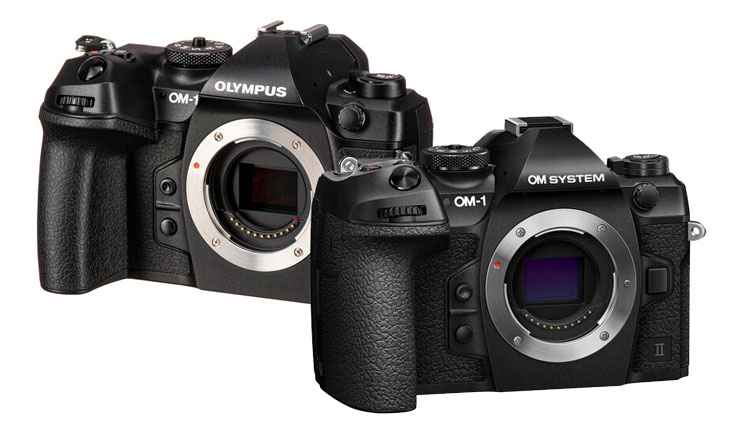
Let’s compare the two cameras and find out the major difference between the two. Olympus OM 1 vs OM System 1 Mark II
1. The Olympus OM-1 Mark II camera has arrived and, as you can see, Olympus is trending with this camera. In the design part, it’s written at the camera’s center “OM System” instead of the Olympus logo, which is not good to see.
| Specification |
Olympus OM-1 |
Olympus OM-1 Mark II |
| Image Processor |
TruePic X |
Same as OM-1, but redesigned |
| RAM |
Not specified |
Improved compared to OM-1 |
| Autofocus Algorithms |
Not specified |
Updated for improved subject detection |
| Logo on Camera |
Olympus logo |
“OM System” |
2. According to the camera maker, the Olympus OM-1 Mark II camera uses the same TruePic X image processor as the original model. Still, this image processor has been redesigned and they have improved the RAM space compared to the previous version. The company says that with the help of more RAM and updated autofocus algorithms, the camera can now have an improved subject detection mode.
3. Now, the camera also has a human detection mode which detects human body movement more precisely compared to the previous generation of cameras. This goes beyond face and eye detection, so now it is more reliable in tracking a human body compared to the previous generation of cameras.
| Specification |
Olympus OM-1 |
Olympus OM-1 Mark II |
| Human Detection Mode |
Not specified |
Detects human body movement more precisely |
| Face and Eye Detection |
Available |
More reliable in tracking a human body |
| Autofocus Refresh Rate |
Not specified |
Improved, boosts performance in subject tracking mode and continuous focus tracking mode |
4. The company says the autofocus refresh rate has been improved (although we don’t have the exact number of differences between the refresh rate of the predecessor and successor). This boosts the performance of the camera, specifically in the subject tracking mode or in the continuous focus tracking mode.
5. With the introduction of a new and improved image processor and artificial intelligence algorithms, the camera makers say they have also updated the image stabilization system of the camera up to 8.5 stops, earlier it was 8 stops in the original OM-1 camera.
| Specification |
Olympus OM-1 |
Olympus OM-1 Mark II |
| Image Processor and AI Algorithms |
Original |
New and improved |
| Image Stabilization System |
8 stops |
Up to 8.5 stops |
| Buffer Size |
169 raw frames at 10 fps with a mechanical shutter, 108 raw frames at 20 fps with an electronic shutter |
Up to 256 raw frames at 50 FPS or 213 frames in a single continuous burst at the rate of 120 FPS |
| ND Filters |
Built-in ND filters |
Graduated ND filter with options of ND 2, ND 4, and ND 8 |
6. The Olympus OM-1 Mark II camera now has a bigger buffer and it can shoot up to 256 raw frames at 50 FPS or 213 frames in a single continuous burst at the rate of 120 FPS. These numbers are better compared to the Olympus OM-1 camera.
7. You already have the option of built-in ND filters in the Olympus OM-1 camera, but now we have a graduated ND filter. This is a unique type of filter generally used for landscape photography and now we have it in the Olympus OM-1 Mark II camera. Even in the graduated ND filter, we get options of ND 2, ND 4, and ND 8.
8. The New OM System Mark II camera features complete blackout-free shooting which was not possible with the Olympus OM – 1, that really a valuable improvement for wildlife and sports shooters.
| Multi-shot Raw Mode |
50-megapixel high-resolution mode |
80-megapixel large image in-camera, with an additional raw mode | 50 Mp handheld also available |
| Battery |
BLX-1, gives around 500 shots per charge |
Same BLX-1 battery, but performance may drop slightly due to a more upscale image processor, estimated around 450-480 shots per charge |
SO, these are the Major differences we have between the two cameras. The rest of the core specifications of both cameras remain the same.
Olympus OM 1 Mark II Camera at B&H Store
By admin, on January 29th, 2024
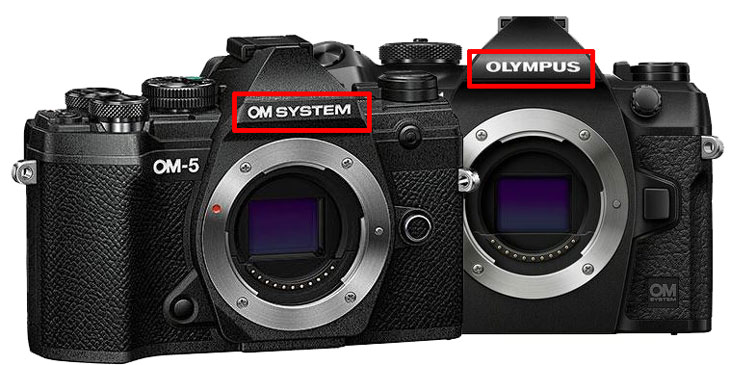
The trademark for the Olympus name has expired. This might be the primary reason behind the announcement of the OM 1 Mark II and the end of the Olympus brand name. It’s really sad to hear, but that’s the way things are going-on right now. There is a high probability that the lower-end models may also get a refresh with the OM series name instead of Olympus. As far as the information we have, the trademark has expired. The reason could be anything, maybe the ownership has changed. But the name is certainly about to change. It’s really hard to see the Olympus brand name going away.
A small update, it is rumored that the OM-1 II will be equipped with an in-camera electronic ND filter function, providing ND2, ND4, and ND8 options.
Based on our latest information, the upcoming Olympus OM-1 Mark II camera will have built-in Electronic ND filters. As you can see, it’s update on a software level. We are still waiting for further updates [More features to be explored soon].
Leaked Image of Olympus OM 1
This is an image of the new OM-1 II, which looks exactly like the current OM-1. The only change is the “II” part at the bottom right of the image. The camera will be unveiled at 6 AM London time on January 30th
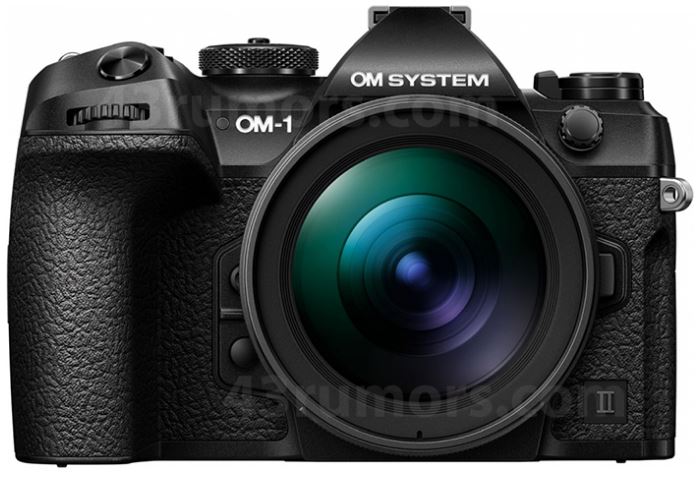
STAY WITH ON FACEBOOK | TWITTER | INSTAGRAM, to get live news + Olympus Rumors 24X7
src – 43rumors
By admin, on March 27th, 2021
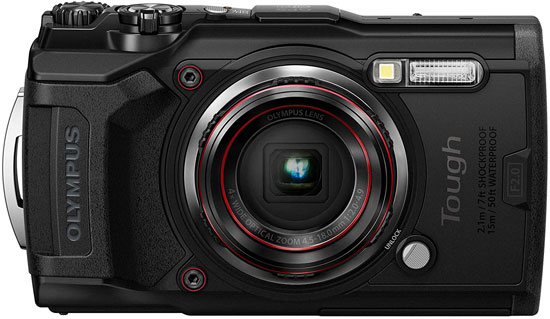
Olympus registered a new compact camera at the wireless certification agency. The name of the camera as per the latest rumors we have is Olympus TG-7, the successor of the Olympus TG-6 rugged compact camera.
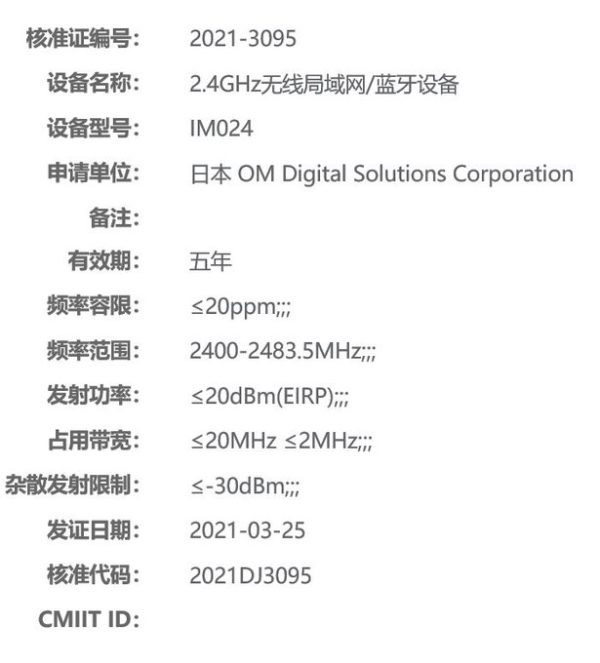
The upcoming camera model code is “IM024”. It is equipped with Wi-Fi (2.4GHz) and Bluetooth. We think it will be Olympus Tough TG-7 to be officially announced within the next 3 months.
STAY WITH ON FACEBOOK | TWITTER | INSTAGRAM, to get live news + Olympus Rumors 24X7
By admin, on July 15th, 2020

We have told you back on October 13th, 2019 that Olympus E-M10 with 20MP Hybrid AF Sensor is expected to arrive on Aug/Sep of 2020. Finally, we are getting more confirmation from different sources. As per the latest rumors, we have Olympus will be announcing the E-M10 Mark III camera with $699 price tag, and the shipping of the camera will start from September 25, 2020.
Olympus OM-D E-M10 Mark IV camera: $699, available in black and silver, shipping will start on September 25
Olympus OM-D E-M10 Mark IV + M.Zuiko Digital ED 14-42mm f/3.5-5.6 EZ lens kit: $799, available in black and silver, shipping will start on September 25
Olympus M.Zuiko Digital ED 100-400mm f/5.0-6.3 IS lens: $1499, will start shipping on September 8
Take a look at the set of rumored specs of the upcoming Olympus E-M10 Mark IV camera
Olympus E-M10 Mark IV Rumored Specifications
- 20MP – Four Thirds CMOS Sensor
- ISO 200 – 25600
- Sensor-shift Image Stabilization
- HR Mode
- 3840 x 2160 video resolution
- Built-in Wireless
We will update you soon as we get more information
STAY WITH ON FACEBOOK | TWITTER | INSTAGRAM, to get live news + Olympus Rumors 24X7
source PR
By admin, on May 19th, 2020
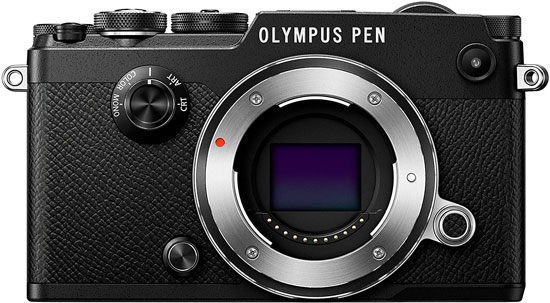
According to the latest rumors we have from rumor mills, Olympus may announce the Olympus PEN F II camera at the end of 2020. Take a look at the rumored core specification of the Olympus PEN F II camera we have published back in Jan 2019.
Olympus PEN-F II Rumored Specification
- 20 MP M4/3 sensor
- Enhanced IS system
- Improved Hybrid AF system / AI AF system
- 4k 60p recording option
We will update you soon as we get any latest information about the upcoming PEN F II camera.
Follow us on our social pages FACEBOOK | TWITTER | INSTAGRAM to get live news + Olympus Rumors 24X7
By admin, on April 13th, 2020

The sensor is designed by a camera manufacturer but outsourced for fabrication to a third party, it is not quite the same as using a sensor from a third party, right? So, most of the camera makers including Fuji, Nikon and now even Canon does the same. In the New patent, Olympus is working to improve the Autofocusing system of the Hybrid sensors. The patent was granted on Feb of this year. We do hope and expect we will see a new generation of Hybrid AF Sensors in Upcoming Olympus Flagship cameras.
Patent Details
Application JP219A events
Application filed by Olympus Corp – 2019-01-10
Priority to JP19A – 2019-06-06
Publication of JP289A – 2020-02-26
Application granted – 2020-02-26
Publication of JPB2 – 2020-04-12
Application status is Active –
Anticipated expiration – 2034-06-19
Patent Details (Translated)
In an imaging device having a plurality of imaging pixels and a plurality of focus detection pixels in which the position of the opening of the light receiving unit is shifted relative to the imaging pixels,
The focus detection pixels of the first focus detection pixel group including a plurality of focus detection pixels having different positions of the openings, which are shifted in the first direction, correspond to the first color filters of the imaging pixels. Are arranged at the first pixel pitch in the first direction for each focus detection pixel where the position of the opening is different,
The focus detection pixels of a second focus detection pixel group including a plurality of focus detection pixels whose openings are shifted in a second direction different from the first direction and whose positions of the openings are different from the first detection pixels of the imaging pixels. At positions corresponding to second color filters different in color from color filters of 1, each of the focus detection pixels with different positions of the apertures is arranged at the second pixel pitch in the second direction.
We will update you soon as we get any new information.

STAY WITH ON FACEBOOK | TWITTER | INSTAGRAM,to get live news + Olympus Rumors 24X7
By admin, on February 1st, 2020
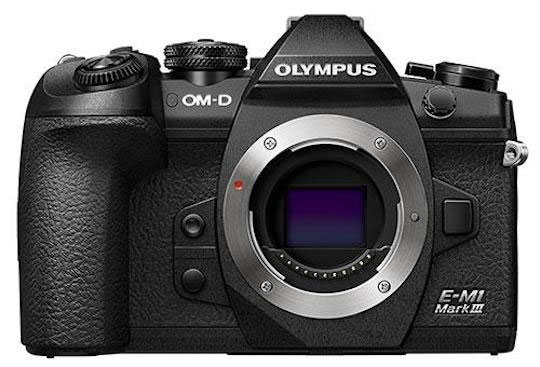
The images and the details of the Olympus E-M1 Mark III camera surfaced over . The camera have a redesigned sensor and a option to record handheld 50MP high resolution and world best image stabilization system upto 7.5 Stops (when combined with OIS lenses). More details in the press text below.
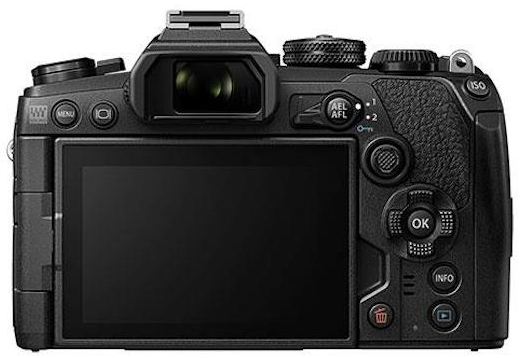
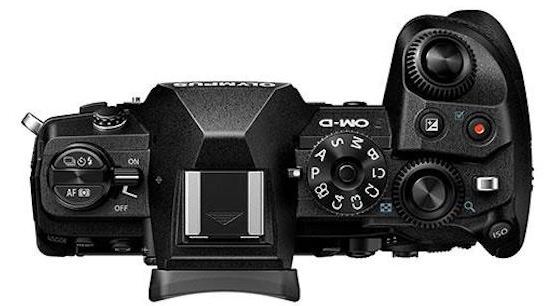
Olympus E-M1 Mark III Press Release
New image processing engine and 20.4 megapixel Live MOS sensor
In combination with the new image processing engine TruePic IX, a 20.4 Megapixel Live MOS sensor, and an extensive line-up of high-resolution M.Zuiko lenses, the 5-axis IS ensures minimal noise even at high-sensitivity settings and top-class image quality with minimal distortion up to the edges of the shot.
For users in need of higher resolutions, the 50MP Handheld High Res Shot feature makes it possible to capture approximately 50 Megapixel high-resolution images without using a tripod. The Tripod High Res Shot function allows for recording ultra-high-resolution (approx. 80 Megapixel equivalent) RAW and JPEG images.
World’s best image stabilization
When synchronizing the in-lens image stabilization of supported lenses with the in-body 5-axis image stabilization, the E-M1 Mark III achieves the worldÅfs best stabilization performance of 7.5 shutter speed steps of compensation with 5-axis sync IS. This level of stabilization enables shooting in dark locations and during super-telephoto photography without a tripod, opening up new possibilities for photographers and filmmakers. Without sync IS, the in-body image stabilization ensures image stabilization with any attached Micro Four Thirds lens of up to 7.0 shutter speed steps compensation.
High-speed, high-precision autofocus
The OM-D E-M1 Mark III is equipped with a 121-point all cross-type On-chip Phase Detection AF sensor for focusing on various areas of the screen. It offers 75% vertical coverage and 80% horizontal coverage of the screen for a wide focusing area. Paired with an advanced AF algorithm, this feature can continually focus on fast-moving subjects with a high degree of precision. Unlike DSLR cameras, there is no degradation in AF precision when using a fast lens. The E-M1 Mark III offers high-precision focusing that can sufficiently bring out the capabilities even of large-diameter lenses such as those with a maximum aperture of f1.2.
AF/AE tracking is possible at maximum of 18 fps high-speed sequential shooting while maintaining the full pixel count of 20.4 Megapixels. The subject can also be checked in the viewfinder during high-speed sequential shooting for accurate tracking.
A multi-selector makes it possible to quickly shift AF areas with your thumb while looking through the viewfinder. Because users can move the AF areas with the multi-selector during sequential shooting, it is possible to accurately focus even on subjects that move erratically, as e.g. often found in wildlife photography. The AF target loop setting is also added, which, based on user selection, either stops the AF target at the edge of the screen or moves it to the opposite edge.
Face Priority/Eye Priority AF
Face Priority / Eye Priority AF, which automatically detects and focuses on peopleÅfs faces and eyes, is now more advanced. The new image processor TruePic IX features higher processing capabilities and improved AF algorithms to better detect small faces and eyes, whilst keeping stable focusing on a subject even in situations where face detection was difficult in the past (such as e.g. focusing on the sides of faces). It is now also possible to use either the buttons or touch operations to select faces when shooting still images or videos, and detection on or off can be changed with the touch of a single button. Along with versatile video functions, this feature makes the E-M1 Mark III a great tool for vloggers.
Starry Sky AF
Starry Sky AF, which is new for the OM-D E-M1 Mark III, is a feature that will revolutionize the world of astrophotography. In the past, photographers have traditionally relied on manual focusing. A new algorithm was developed to enable accurate focusing even on the tiniest stars shining in the night sky, enabling ultra-high-precision autofocusing. One of two modes in Starry Sky AF is the Speed Priority mode (default setting), which prioritizes focusing speed and complete AF operations in a short period of time. Thanks to the powerful image stabilization, this feature makes handheld astrophotography possible using a wide-angle lens. The second mode Accuracy Priority uses a fine-tuned focus scan and is effective for shooting specific stars with telephoto lenses.
SSWF (Super Sonic Wave Filter)
With OlympusÅf advanced SSWF (Super Sonic Wave Filter) technology (which vibrates the image sensor filter with an acceleration of several thousand G 30,000 times per second to powerfully shake off dust and dirt) and a new sensor coating introduced with the OM-D E-M1X, dirt cannot stick to the sensor, reducing spots in images to 1/10th of that in conventional models. The high-durability shutter unit in the E-M1 Mark III clears 400,000 operation tests and therefore offers a high level of reliability.
Handheld 4K video
The E-M1 Mark III features an IS mode specifically designed for video recording. Electronic stabilization combined with in-body 5-axis stabilization delivers powerful image stabilization particularly useful for videographers. This provides a high level of performance for handheld video content creation without using a tripod or other stabilizing device, even when shooting in high-resolution formats, which are susceptible to the effects of camera shake, such as 4K or Cinema 4K (C4K).
This model supports OM-Log400 shooting, which enables shooting without loss of details in shadows and highlights, along with color grading for a high degree of freedom over images. In order to make Live View images more visible, a View Assist function is available, which converts the color gamut to Full HD standard BT.709 equivalent for display.
Weather sealing
The rugged magnesium alloy body of the OM-D E-M1 Mark III features OlympusÅf acclaimed dust-, splash- and freezeproof design to allow for shooting in any location and environment.
Olympus apps and software
The OI.Share smartphone app can be used to connect to the camera via Wi-Fi, import shooting data to a smartphone, and to use the smartphone for remote camera operation. OI. Share can now also be used to update the camera firmware and backup and restore camera settings for the OM-D E-M1 Mark III.
Olympus Workspace can handle professional tasks such as RAW processing and image editing, along with offering a great deal of freedom over screen layout, etc. Connect a computer to the OM-D E-M1 Mark III via USB to enable high-speed RAW processing with Olympus Workspace using the new image processor TruePic IX. Clarity and Dehaze editing filters are included for a greater range of expression in astrophotography, etc.
By using Olympus Workspace Version 1.3, being released at the same time as the OM-D E-M1 Mark III, it makes it easy to replace the audio files of the recorded video to High res sound recorded by using Slate Tone on the LS-P4 / LS-100 while recording video.
This control software for computers meets the demands of studio photography. When using the software, live shooting results can be imported via Wi-Fi without using a USB connection, providing powerful support for the workflow of studio shooting. It supports high-speed 5 GHz band communication.
Dimensions:134.1 x 90.9 x 68.9 mm
Weight:504g
|
KEEP THIS BLOG ALIVE - Support New Camera Buy Canon Lenses, Buy Music CD or Digital Camera at amazon it helps this site, and you do not pay anything extra, it is just a way to help support this site.

|


















